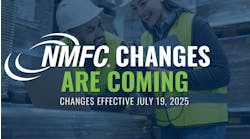Everyone knows about the technician shortage the trucking industry is facing. What you might not know is that the shortage is for qualified technicians who have the skill set to work on today’s complex engines, safety technologies, HVAC, diagnostics, telematics, and drivetrain., and the many software systems associated with these components.
Plus there are technologies looming on the horizon that will require additional specialization, technologies such as electric vehicles, hybrid options, fuel cells, CNG/LNG, etc.
According to Joe Puff, NationaLease’s vice president of truck technology and maintenance, “technician development is a national problem that can only be solved locally.”
Speaking at the recent NationaLease maintenance meeting, Puff said, “Poaching ‘the best’ is not a long-term solution; you need to grow your own.”
One place to start is by examining your hiring criteria. Maybe you need to consider hiring based on character equally as much as on experience and then require additional continuing education. You can weight performance reviews to encourage on-going training. Plus much of what has been written about the younger generation indicates that they are looking to work somewhere that offers them a career path. Hiring someone and then giving them an education plan is a good first step in showing them they have a future at your business.
Regardless if your technicians are inexperienced or seasoned, given the pace of change in the market they all will need some additional training to keep their skills up. Assign someone to lead your training program and have accountability for it. This does not mean they have to do it alone. There are resources at the various OEMs and suppliers as well as third-party trainers who can assist you. Web-based training is also another great option because it often is free and usually is broken down into digestible lessons of 15 to 60 minutes per module. You can make training part of the technicians work day and/or you can pay bonuses to them for completing certain modules.
How do you know which systems and components to focus on first? Do an assessment of your shop to see the kinds of work you are currently doing and what you anticipate will be required in the near and long-term future. Then analyze the skill sets of your current technician workforce to see where the gaps are. Prioritize the skills you will need and begin training on those immediately. However, make sure you develop a personalized training map for each one of your technicians.
Each month meet with each technician on an individual basis to review the map and see how they are progressing. Adjust as necessary and address any concerns they have.
Some fleets worry about the cost of training and the fact that after they train a technician they lose that investment if the technician leaves to work someplace else. To the first objection, Puff said, “If you say you can’t afford the cost of training, you might want to figure out what it will cost you not to train your technicians.”
As for technicians leaving after you’ve spent time and money training them, look at your wage and benefits package to make sure they are competitive with other businesses in your area. And, as important, make sure your technicians feel needed and valued. If you take care of your technicians, pay them fairly and make them feel like they are valued part of your team they are not going to run off and work for someone else.
It is not very likely that the technician shortage is going to go away anytime soon. You need to take steps today to start addressing the problem so that your technicians will be able to successfully repair not only today’s trucks but will be prepared for the trucks of the future.



